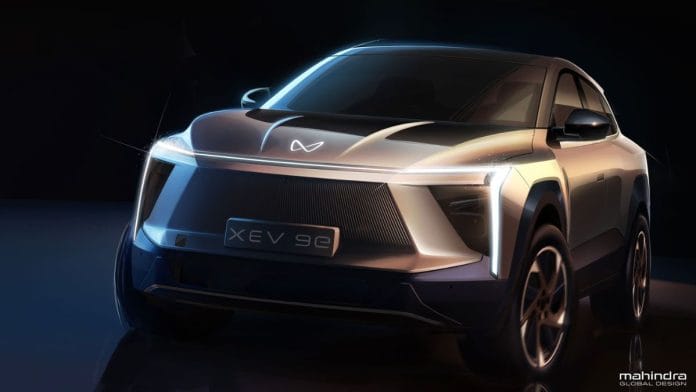Many moons ago, I had argued that your next car should be an electric vehicle. Since then, however, sales of electric cars have been tepid, to say the least. But a blockbuster October, with electric passenger vehicle sales crossing the 10,000 mark for the first time, might be an indication that the market for electric passenger cars needed just one thing: competition.
The VAHAN website, run by the Ministry of Road Transportation and Highways, which tracks vehicle registrations, is a better way to monitor actual retail sales (although Telangana remains a holdout on providing data). Data from the website showed that the new MG Windsor became India’s best-selling electric passenger vehicle, beating the Tata Nexon EV.
Vivek Srivatsa, Chief Commercial Officer, Tata Passenger Electric Mobility (TPEM) once told me that one of the biggest issues in the EV market was the “lack of competition”. With TPEM enjoying a share of over 80-90 per cent of the passenger electric vehicle market, he felt that more players entering the electric vehicle market would dramatically increase consumer confidence in electric vehicles.
And the trends show he was right.
Flood of EVs
In the coming week, Mahindra will be showcasing its first ‘Born Electric’ SUVs in Chennai, the BE 6e and XEV 9e. Suzuki just showcased the production-ready version of its eVX concept in Milan, which will be sold as e Vitara and manufactured by Maruti Suzuki. Hyundai India’s plans to launch the electric version of the Creta at the Bharat Mobility Show are well-established and its sister firm Kia is also going to be launching its first electric vehicle for India next year.
The huge increase in product choice in the Rs 20-30 lakh segment for electric vehicles is likely to drive car buyers to the showrooms. Plus, more electric vehicles on the road will also solve the ‘chicken and egg’ problem of public charging infrastructure. In fact, fast-improving battery management software and battery chemistries have meant that electric cars are becoming more efficient than ever before.
Of course, this rapid evolution in electric vehicles is a problem for consumers as well, as I wrote a few months ago.
While increased choice will drive consumers into the showrooms and get a few more to buy electric cars, will it dramatically increase the share of electric vehicles in the sales mix? VAHAN data showed that overall passenger vehicle retail sales stood at over 4,80,000 units in October. A record, by any means, but the percentage of electric vehicle sales was just a sliver over 2 per cent.
Also read: New Maruti-Suzuki Dzire has all the safety bells and whistles. That’s what sells now
Incentives, please
India’s adoption of electric passenger vehicles has been painfully slow, while sales of electric two-wheelers have skyrocketed in the past few months. As more and more electric three-wheelers join the fleet, the lack of momentum in electric passenger vehicle sales ought to be worrying when we consider that electric vehicles reduce pollution.
While factors like temperature inversion and stubble burning play a major role in worsening the air quality in North India, vehicular pollution plays its part as well. In China, one of the major contributors to the improvement of air quality was the country’s dramatic push toward ‘New Energy Vehicles’.
There are valid arguments to be made about how electric vehicles just displace pollution, but the reduction of tailpipe emissions can dramatically help curb pollution in cities.
While incentives like a lower GST rate have helped EV sales, particularly for luxury EVs, more incentives are needed to help drive the EV demand further. For instance, why do electric vehicle owners need to pay 18 per cent GST when they purchase power from public chargers? A reduction in this rate, even a temporary one, would help drive demand. India has always been a cost-sensitive market and the rise of CNG-fuelled vehicles is an indication of that.
More choices in the coming year will definitely drive people into electric vehicle showrooms. Increased incentives, like Telangana’s recent exemption of electric vehicles from road tax and registration fees for two years, will help drive demand.
“Hyderabad and other places in Telangana should not face severe pollution issues like New Delhi,” transport minister Ponnam Prabhakar said while releasing the policy.
There is no doubt that schemes such as performance-linked incentives (PLI) have been particularly successful in supply-side issues, as rising smartphone exports have proven. But for electric passenger cars, there need to be some demand-side incentives by both the central and state governments. Such incentives have played a major role in promoting electric two and three-wheelers. However, civil servants’ blinkered view of passenger cars as a ‘luxury item’ has meant that they haven’t been given the same benefits. Ergo, a move to reduce GST on buying power would benefit all electric vehicle owners.
The incoming flood of electric vehicles in 2025 will play its role, but let us hope that the government does its bit too.
Kushan Mitra is an automotive journalist based in New Delhi. He tweets @kushanmitra. Views are personal.
(Edited by Prasanna Bachchhav)






